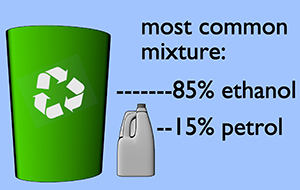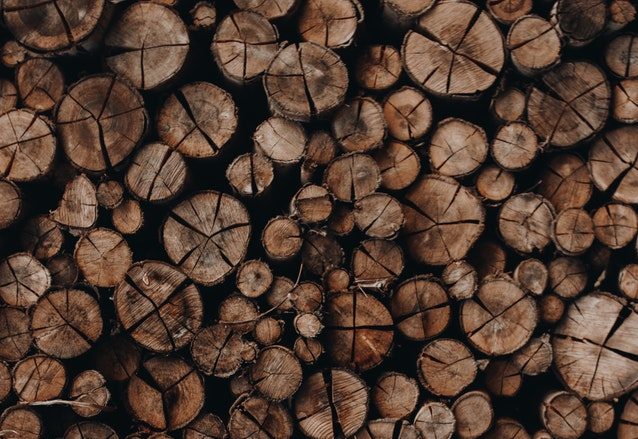For the few wondering what off-grid means – The term off-the-grid (OTG) can refer to living in a self-sufficient manner without reliance on one or more public utilities. … Off-the-grid homes aim to achieve autonomy; they do not rely on one or more of municipal water supply, sewer, gas, electrical power grid, or similar utility services.
If you know what you’re doing it’s not hard to take yourself off the grid in many ways. Growing your own food just takes some land – it doesn’t have to be all that much – and a bit of work. Hunting or keeping small livestock are traditional and effective ways of keeping yourself supplied with fresh meat. Millions of people across the USA draw water from their own wells.
But how far can you really go off the grid? Aren’t there some things – like fuel – that you can’t produce for yourself?
The answer is no, not really. If you’re determined to do it, even fuel independence is achievable. Not only can you do it, but you’ll eventually save a fortune by ending your reliance on profit-hungry energy companies.
Fuel falls into two categories. The first, and easier one is energy to cook, heat your home and supply hot water.
The second is fuel to power internal combustion engines – vehicles, generators and heavy duty tools. That one takes a bit more work but it’s still something that anyone can achieve if they make the decision. Let’s look at each type of fuel in turn.
1. Home Energy
It’s possible to heat and light a modern home, and do all your cooking, with nothing but electricity – and electricity can be generated from renewable sources. If you install enough capacity in solar panels, wind turbines or even micro-hydroelectric, you can meet all your household energy needs that way. It’s not always the ideal solution, though. Solar needs some kind of storage system to keep the power on at night, and all the renewable methods with the partial exception of hydro are dependent on the weather. If you want to go completely off grid it’s best not to rely on them for 100% of your energy.
Putting electricity aside for the moment, one good fuel for your home is wood. A simple fire will heat a room, but you can go a lot further than that. A wood-burning range in your kitchen will handle cooking, and also supply you with hot water and power your central heating.
Stove wood can be bought quite cheaply in most areas, but it makes sense to cut your own. If you have timber on your land the solution is obvious – harvest it sustainably. If you can’t supply enough timber that way look at local state forests; you can usually get a permit to cut wood, there. Even better, in some forests loggers fell and limb trees, then only take the trunk. The top and limbs can usually be harvested for nothing, and that’s an ideal source of free firewood. All you have to do is cut it to length, split and season it.
Seasoning deserves some explanation:
It’s possible to burn newly cut wood, but not usually a good idea unless it’s from a dead tree. Wood cut from a live tree is hard to light and tends to put out a lot of smoke, but there’s a bigger problem: It usually has a moisture content of somewhere between 30% and 50%. If you burn that, a lot of the heat generated by the fire will go towards evaporating enough of the moisture to let the green wood burn. You can waste up to 30% of the energy that way. Good firewood contains around 15-20% moisture. Less than that and it will burn too fast; more and it burns inefficiently. That means more work for you; 30% wasted heat means you need 30% more wood to keep your home running. Cutting wood is going to be a big enough task anyway; why make it bigger by almost a third?
The solution is to season your wood:
That basically just means letting it dry naturally until the moisture content comes down into the range you want. Before letting wood season, cut it to length and split it down; if you try to season whole logs it will take years, and the wood could even start to rot if enough moisture is trapped inside. Once it’s split, stack it in a well-ventilated place. Ideally, it should season in an open-sided shelter with a roof to keep the rain off. Stack it off the ground, and use boards or poles to separate each layer of split logs from the one below. That will let air circulate between them, helping them season evenly and also deterring critters from moving in.
The length of time needed for seasoning depends on a lot of variables. If you live in a humid climate it will take longer, as the moisture will evaporate more slowly. Hardwood also needs more time. Generally, if you cut softwood in winter and stack it in spring it should be ready to burn by the time fall arrives. Hardwood might take a full year or eighteen months.
Obviously wood can produce heat, but it can’t produce electricity. The best way to do that is to use renewables with a generator as backup. You can run the generator on conventional diesel or gasoline, but if you really want to go off grid you should look at alternatives for that too. The good news is there are options available – and they’re the same fuels that can also power your vehicle.
2. Engine Fuels
It’s possible to live without the internal combustion engine, but life will be pretty difficult.
With no vehicle, generator or chainsaw you can expect to quickly learn how hard our pioneer ancestors worked just to keep themselves supplied with essentials. Few people want to get that far off the grid, so being able to produce fuel that will power engines is a very good idea.
Modern fuels are carefully blended and fortified with additives to burn cleanly and efficiently. Most people have got accustomed to the idea that fuel is an exact science and these complex blends are necessary. The truth is a bit different. Most engines will run on practically anything they can ignite and that releases enough energy when it burns. Not sure about that? Most gasoline you buy nowadays has ethanol mixed in with it, usually about 10%. Ethanol is about 30% less powerful than gasoline but it creates fewer toxic exhaust emissions. It’s also cheaper and renewable – gasoline is refined from oil, but ethanol can be produced by fermenting and distilling corn. It’s cheap, and that’s the main reason oil companies mix it with their gas.
Ethanol
 Just about any gasoline engine will run on fuel containing up to 10% ethanol, but many newer ones – after about 2001 – will handle much more. Flex-fuel vehicles can run on up to 85% ethanol, and some can handle 100% ethanol. Most new vehicles for the Brazilian market will run on pure ethanol, for example.
Just about any gasoline engine will run on fuel containing up to 10% ethanol, but many newer ones – after about 2001 – will handle much more. Flex-fuel vehicles can run on up to 85% ethanol, and some can handle 100% ethanol. Most new vehicles for the Brazilian market will run on pure ethanol, for example.
Even if you can replace 85% of your gas with home-produced fuel that’s going to save you a lot of money and reduce your reliance on the oil industry, but total replacement is possible.
Ethanol fuel is produced the same way as whiskey, so you should probably check out the law before trying to set up a production line. Some states charge a tax on ethanol you produce for fuel; you might also have to make it unfit for drinking.
Actually making ethanol involves two stages – fermentation and distillation. Fermentation involves breaking down the sugars and starches in biomass and converting them to ethanol; distillation extracts the ethanol from the fermentation product. The first thing you’ll need to do is get your hands on suitable biomass. The good news here is that just about any non-woody plant material can be fermented. Corn is popular, because it’s a very dense crop that can produce a lot of fuel for a relatively small area – but “relatively” is the important word here. To run your car all year you’ll need to grow about two acres of corn and process it all into fuel. That’s quite a lot of land – but you can reduce it by planting a crop that contains more sugar than corn does. Sugar beet is an obvious choice; so is sugar cane if you have the climate for it, but harvesting that is a lot of work.
Once you have your fermentable vegetation the next step is to process it into a usable form. For most plants, that means grinding or shredding them. Grains, like corn, might need to be sprouted and dried first. Once the biomass is processed turn it into a mash by mixing with boiling water, add yeast and leave it to ferment for between one and two weeks.
What you’ll end up with is a fermented mash that contains around 10% ethanol and a lot of water and plant matter. Distillation will extract the pure ethanol, which you can then use as fuel. Owning a still is legal almost everywhere in the USA; where it gets problematic is if you actually use it to produce ethanol. Check your local laws, as these can vary quite a lot, but as long as you can show that you’re making fuel, not moonshine, you’ll probably be okay.
Biodiesel
Diesel engines, especially older ones, are even easier to run off the grid. They’re also simple to maintain and have loads of torque. Diesels run at a high compression ratio and don’t use spark plugs to ignite the fuel; the heat generated by compression does it. This means they can burn fuels that don’t ignite so easily, including a lot of plant-based oils. Biodiesel is a growth industry and you can make it yourself, but there’s an easier option – cooking oil.
Ordinary canola oil can be easily converted into a diesel substitute, and it’s cheap. In fact, if you can get used oil from a restaurant it’s basically free, and used oil is actually better as a fuel. Some TV shows have shown how easy it is to get an old diesel running on oil; the simplest way is to just filter the oil to get the burnt crunchy bits out, add 1-2% mineral spirits to thin the oil and leave it to stand for a week.
That will work, but it’s not a perfect solution; it can be harder to start from cold, and might damage modern injector systems. On the plus side exhaust, emissions are much lower, it lubricates the engine better than actual diesel does, and it actually gives more power and higher fuel efficiency. With all the advantages of cooking oil, it’s worth doing slightly more work to perfect it as a fuel.
To purify biodiesel from oil you need lye and methanol (wood alcohol). For each gallon of oil mix half an ounce of lye into a pint of methanol until the lye has completely dissolved. Immediately mix this into the oil and stir it steadily for 20 minutes to half an hour. Then leave it to settle. It will separate into two layers; the bottom one is glycerine, which has several uses of its own. The top layer, which will be the bulk of the liquid, is biodiesel.
One issue with biodiesel is that it can corrode natural rubber. If you’re using it in an older engine it’s a good idea to replace any rubber gaskets and hoses with synthetic ones; modern engines should be fine without modifications.
Not all oils are equally good for making biodiesel. The best is also the cheapest – canola. Sunflower is a close second.
Wood Gas
A final option is wood gas. A gas generator can convert wood into a gas by heating it to high temperatures in a limited oxygen atmosphere. The gas is mostly hydrogen and carbon monoxide, with some methane and other gasses mixed in. This gas will power a standard gasoline engine; during the Second World War many vehicles in Europe were converted to run on wood gas, with a small gas generator mounted on the vehicle. FEMA actually published plans of a gas generator in 1989; it works, and is quite simple to make, but you’ll get much better performance with the traditional Imbert generator.
Wood gas is actually an amazing fuel; you can run a vehicle on it, or use it to power a generator and supply your home with electricity, using cheap and plentiful wood as a fuel. Other forms of biomass, including many types of agricultural waste, can be used as well.
Because wood gas contains a high percentage of carbon monoxide it’s potentially dangerous. You definitely don’t want to try using an improvised gas generator indoors. If you’re using wood gas for electricity generation keep the gas generator outside your home in a well-ventilated shed. The most popular vehicles for conversion are trucks; the gas generator can be mounted in the bed, safely outside the cab, and will still leave plenty of load space.
Many off grid livers are frustrated at still being reliant on commercial fuel supplies. The good news is that you don’t actually have to be. With the options we’ve looked at here you can supply energy to your home, plus run your vehicle and other engine-powered devices, without using a drop of oil. When it comes to energy independence that’s about as good as it gets.
Other self-sufficiency and preparedness solutions recommended for you:
The vital self-sufficiency lessons our great grand-fathers left us
Knowledge to survive any medical crisis situation
Liberal’s hidden agenda: more than just your guns
Build yourself the only unlimited water source you’ll ever need
4 Important Forgotten Skills used by our Ancestors that can help you in any crisis
Secure your privacy in just 10 simple steps
For the few wondering what off-grid means - The term off-the-grid (OTG) can refer to living in a self-sufficient manner without reliance on one or more public utilities.





 Just about any gasoline engine will run on fuel containing up to 10% ethanol, but many newer ones – after about 2001 – will handle much more. Flex-fuel vehicles can run on up to 85% ethanol, and some can handle 100% ethanol. Most new vehicles for the Brazilian market will run on pure ethanol, for example.
Just about any gasoline engine will run on fuel containing up to 10% ethanol, but many newer ones – after about 2001 – will handle much more. Flex-fuel vehicles can run on up to 85% ethanol, and some can handle 100% ethanol. Most new vehicles for the Brazilian market will run on pure ethanol, for example.